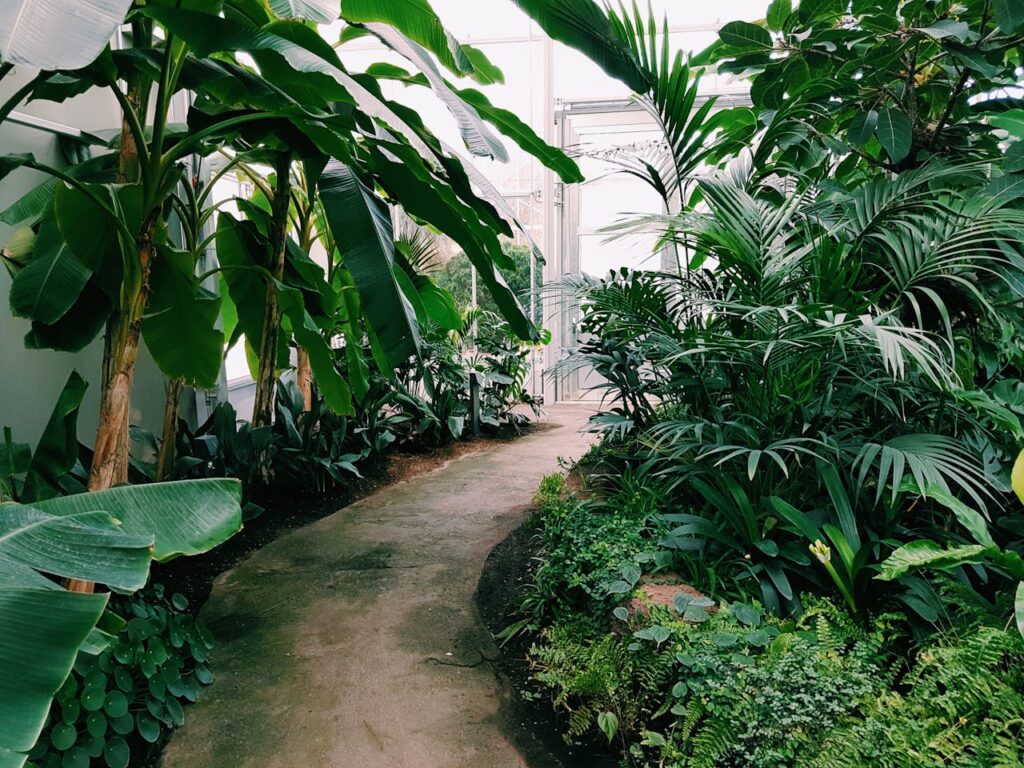In our fast-paced world, the allure of a beautiful garden often collides with the reality of our busy lives. This is where low-maintenance garden design comes to the rescue, offering a perfect balance between aesthetic appeal and minimal upkeep. Whether you’re a novice gardener, a busy professional, or someone who simply wants to enjoy their outdoor space without constant work, creating a low-maintenance garden can be the ideal solution. This comprehensive guide will walk you through the process of designing and implementing an easy-care landscape that thrives with minimal intervention.
- Understanding Low-Maintenance Gardening
A low-maintenance garden is designed to flourish with minimal human intervention. It incorporates plants, materials, and design elements that naturally require less care, water, and resources. The core principles include choosing plants adapted to local conditions, efficient use of water and resources, minimizing the need for frequent pruning, mowing, and fertilizing, incorporating hardscaping to reduce planted areas, and utilizing natural pest control methods.
The advantages of creating an easy-care landscape are numerous. You’ll save time on garden chores, reduce expenses on water and fertilizers, benefit the environment through lower water consumption and decreased chemical use, experience less stress about garden upkeep, and create a sustainable outdoor space that can thrive for years with minimal intervention.

- Planning Your Low-Maintenance Garden
Before diving into design, take time to evaluate your current garden. Measure your garden’s dimensions, analyze soil type and quality, observe sunlight patterns throughout the day, note existing features like trees and structures, and identify problem areas such as poor drainage or erosion. Consider how you want to use your outdoor space – do you need areas for relaxation, entertaining, or perhaps a small vegetable patch?
Your local climate plays a crucial role in low-maintenance garden design. Research your USDA hardiness zone, understand typical rainfall patterns, note temperature extremes, and be aware of common local pests and diseases. This information will guide your plant choices and design decisions.
While a completely maintenance-free garden is unrealistic, you can significantly reduce upkeep. Prioritize which areas need to be low-maintenance, decide how much time you’re willing to spend on garden care, and consider your budget for initial setup and long-term maintenance.
- Choosing the Right Plants for Easy Care Landscaping
Native plants are the cornerstone of easy-care landscaping. They’re adapted to local climate and soil conditions, naturally resistant to local pests and diseases, require less water once established, and support local wildlife and pollinators. Examples include Black-Eyed Susan, Coneflower, Butterfly Weed, and Blue False Indigo, though specific choices will vary by region.
Drought-tolerant species are another excellent choice for reducing water needs and maintenance. Look for plants with silvery, hairy, or waxy leaves, deep root systems, or consider succulents for extremely dry areas. Popular drought-tolerant plants include Lavender, Russian Sage, Sedum, and Yarrow.
Opt for perennials over annuals for lower maintenance. Perennials return year after year, provide long-term structure and color, and reduce the need for annual replanting. Low-maintenance perennials include Daylily, Hosta, Black-Eyed Susan, and Coreopsis.
When it comes to shrubs and trees, choose slow-growing varieties that don’t require frequent pruning. Evergreen shrubs provide year-round structure, while deciduous shrubs with interesting bark or winter form add seasonal interest. Trees with non-invasive root systems are ideal. Examples of low-maintenance woody plants include Boxwood, dwarf Conifer varieties, Serviceberry, and Japanese Maple.
- Efficient Lawn Alternatives
Traditional lawns are often high-maintenance, so consider alternatives. Ground covers can replace high-maintenance lawns with low-growing plants that spread to cover bare soil. Popular options include Creeping Thyme, Sedum, Creeping Jenny, and Moss Phlox.
For an always-perfect lawn without the work, consider artificial turf. Modern artificial grass looks increasingly realistic and requires no mowing, watering, or fertilizing. While the initial cost is higher, it offers long-term savings in time and resources.
Xeriscaping principles can be incorporated for extremely low-water landscapes. This involves grouping plants with similar water needs, using mulch extensively to retain soil moisture, incorporating rocks and gravel in design, and minimizing or eliminating traditional lawn areas.
- Smart Hardscaping for Low-Maintenance Gardens
Choose hardscaping materials that withstand weathering and require minimal upkeep. Concrete is durable and versatile, natural stone is long-lasting and attractive, and composite decking is resistant to rot and insects.
Incorporate inorganic materials like gravel and rocks for texture and interest. Use varying sizes of gravel and rocks, create dry river beds for visual appeal and drainage, and combine with drought-tolerant plants for contrast.
Utilize mulch for multiple low-maintenance benefits. It suppresses weed growth, retains soil moisture, regulates soil temperature, and improves soil health as organic mulches decompose. Choose from organic options like bark chips, straw, or compost, or inorganic types like gravel, pebbles, or crushed stone.
- Water-Wise Gardening Techniques
Implement water-saving irrigation methods such as drip irrigation, which delivers water directly to plant roots, or soaker hoses, ideal for garden beds and borders. Smart sprinkler systems that adjust based on weather conditions can also significantly reduce water waste.
Consider rainwater harvesting to reduce reliance on municipal water. Install rain barrels or cisterns, create rain gardens to capture runoff, and use permeable paving to allow water absorption.
Design your garden to thrive with minimal watering by creating berms and swales to direct and retain water, using mulch extensively to reduce evaporation, and grouping plants with similar water needs.
- Minimizing Pruning and Trimming
Select plants that naturally maintain their shape, such as dwarf varieties of shrubs and trees or compact cultivars of perennials. Plan for mature plant sizes to reduce future pruning needs by spacing plants according to their full-grown dimensions and considering the plant’s natural shape in your design.
Embrace a more relaxed, naturalistic garden style by allowing plants to grow into their natural forms and using gentle pruning techniques to guide, not force, growth.
- Pest and Weed Management in Low-Maintenance Gardens
Use plant combinations that naturally deter pests, such as marigolds to repel nematodes, nasturtiums to attract aphids away from vegetables, and herbs like basil and mint to deter various insects.
Apply proper mulching techniques to minimize weed growth. Use a 2-4 inch layer of organic mulch, refresh it annually or as needed, and apply mulch after weeding for best results.
Employ natural methods for pest control by encouraging beneficial insects like ladybugs and lacewings, using neem oil or insecticidal soaps for persistent problems, and installing physical barriers like copper tape for slug control.
- Time-Saving Garden Structures
Incorporate raised beds for simplified gardening. They improve drainage and soil quality, reduce bending and strain while gardening, and create clear boundaries between planted areas.
Utilize containers for flexibility and ease of care. Choose large containers for less frequent watering, use self-watering planters for even lower maintenance, and group containers for efficient watering and care.
Maximize space and minimize maintenance with vertical elements. Install living walls for dramatic effect, use trellises and arbors for climbing plants, and hang wall-mounted planters for herbs or flowers.
- Automated Garden Systems
Implement technology for effortless watering with smart irrigation controllers. WiFi-enabled controllers adjust to real-time weather data, soil moisture sensors prevent overwatering, and zone-based systems water different areas according to need.
For those who maintain a lawn, consider automated mowing with robotic lawn mowers. They offer set-and-forget operation, promote healthier grass through frequent mowing, and often include a mulching feature that returns nutrients to the soil.
Utilize smart technology for plant monitoring. Soil sensors can track moisture, light, and nutrient levels, while app-connected systems provide care reminders and tips. Automated plant lights can be useful for indoor or shaded areas.
- Seasonal Maintenance Tips for Low-Effort Gardening
Focus major efforts on key seasons. In spring, prune, divide perennials, and refresh mulch. In fall, remove debris, protect sensitive plants, and plant bulbs.
Protect your low-maintenance garden during cold months by applying winter mulch to insulate plant roots, wrapping or covering delicate plants, and cleaning and storing garden tools and equipment.
Minimize work during the growing season by grouping potted plants for easier watering, using slow-release fertilizers to reduce feeding frequency, and allowing lawns to grow slightly longer to reduce watering needs.
- Eco-Friendly Low-Maintenance Practices
Simplify composting for garden benefits. Use a tumbling composter for quick, easy turning, create a simple three-bin system for larger gardens, or utilize compost tea for effortless fertilizing.
Encourage a self-sustaining ecosystem by planting native species that support local wildlife, installing bird baths and feeders, and creating habitats like brush piles or bee hotels.
Minimize environmental impact with natural solutions. Use compost and organic mulch to improve soil health, employ biological controls for pests, and choose disease-resistant plant varieties.
Conclusion
Creating a low-maintenance garden doesn’t mean sacrificing beauty or enjoyment. By carefully selecting plants, incorporating smart design elements, and leveraging technology, you can create a stunning outdoor space that practically takes care of itself. Remember, the goal is to spend less time working in your garden and more time enjoying it. With thoughtful planning and implementation of these low-maintenance gardening strategies, you can achieve a beautiful, sustainable landscape that thrives with minimal effort.
FAQs
Q: Can I have a colorful garden that’s low-maintenance?
A: Absolutely! Choose long-blooming perennials and shrubs with colorful foliage for year-round interest. Plants like coneflowers, black-eyed Susans, and ornamental grasses offer extended color with little care.
Q: How often should I water my low-maintenance garden?
A: It depends on your plant choices and climate. Generally, deep, infrequent watering encourages deep root growth and drought resistance. Once established, many native and drought-tolerant plants may only need watering during prolonged dry spells.
Q: Is it possible to have a low-maintenance vegetable garden?
A: Yes, focus on perennial vegetables and herbs, use mulch to suppress weeds, and consider raised beds for easier access. Choose disease-resistant varieties and implement companion planting to reduce pest issues.
Q: Can I convert my existing high-maintenance garden to a low-maintenance one?
A: Absolutely. Start by replacing high-maintenance plants with easier alternatives and incorporating more hardscaping elements. This can be done gradually over seasons to spread out the work and cost.
Q: How much time should I expect to spend maintaining a low-maintenance garden?
A: While it varies, many gardeners find they can keep their low-maintenance gardens looking great with just a few hours of work per month, plus some seasonal clean-up in spring and fall.
By following these comprehensive guidelines and incorporating low-maintenance garden design principles, you can create a beautiful, easy-care landscape that provides year-round enjoyment with minimal effort. Remember, the key is to work with nature, not against it, choosing plants and design elements that naturally thrive in your specific conditions. With smart planning and the right approach, you can have the garden of your dreams without the endless chores.


